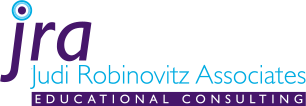Should I Upload a Resume with my College Application?
The Short answer is YES!
Your activity résumé will be a key element in your college applications (and even applications for some honor societies, scholarships, and summer programs). Of the roughly 1,000 colleges that accept the Common Application, about ⅓ provide you with the opportunity to upload your résumé. And that’s just colleges that accept the Common App. The total number of colleges that will accept your résumé as part of an application is undoubtedly higher. You’ll be able to create a stronger activity section on your applications with a solid résumé that you’ve worked on over time and kept up to date. Your teachers and guidance counselor will write stronger college recommendations if you share your résumé with them.
College admissions is a holistic procedure, and, beyond your “data” (academic record and test scores), it’s your “voice” − who you are as a person − that really differentiates you from the rest of the applicant pool. How is your “voice” conveyed? Through your essay; your teacher, counselor, and other recommendations; and your presentation of extracurricular commitments – especially on an activity résumé.
Your extracurricular engagement actually comprises the 3rd most important factor in college admissions – right behind your academic record and test scores. And in today’s world of so many test-optional colleges, your extracurricular engagement will carry significantly more weight if you don’t submit SAT or ACT scores.
The goal of a résumé is to effectively market your extracurricular accomplishments and appropriately set yourself apart from your peers by showcasing your accomplishments, leadership, creativity, initiative, collaborative spirit, influence on others, compassion, goals, and impact of your activities. It’s your opportunity to brag, but with a dose of humility.
While virtually all applications have an activities page, it provides precious little room for you to sufficiently elaborate on your activities and interests. So, to present yourself in the most compelling way, you need a résumé to cast a strong light on your character and to show how you’ll likely contribute to your college community.
You’re probably asking yourself right now what to include in your résumé and how to organize everything to make it truly effective. Your résumé should tell a succinct story about who you are, reflecting your personal characteristics, potential major, and/or career goals. Include only your most meaningful activities and interests; fewer activities with longer-term commitment are far better than many shorter-term activities with limited commitment. Go back as far as the summer before 9th grade; pre-high-school activities can be included only if they continued into high school. A winning résumé has great eye appeal, leading the reader to delve into it and learn what makes you YOU.
With that in mind, here are some characteristics of winning résumés:
Effective use of white space
Well positioned graphics to reflect some or all activities (optional)
Color-coordinated to match a university’s official colors (optional)
Each activity detailed with…
Activity name and when you did it (e.g, 10-12, Summer 2025)
Short bulleted lines (like these!) rather than long blocks of text or sentences
Action verbs (in correct tense) to begin almost every bulleted line (e.g., organize, plan, coordinate, collaborate, enlighten, teach, promote, lead, delegate, mentor, coach, train, host, foster, inspire, share, encourage)
Include actions that help you distinguish yourself from other students
Focus on accomplishments, rather than routine responsibilities
Highlight leadership and initiative
Let your reader know WHY you did each activity, not just WHAT you did
Include a key takeaway from your activity experience
Activities grouped by categories you’ve created, giving your résumé a clear focus
Most important categories first
Most important activities first within each category
Easily readable font (11- or 12-point − Arial or Calibri are my favorites)
Margins of ½ to 1”
1 or 2 pages (yes, 2 pages is fine for your activities résumé)
Personal identifying information as a header on each page
Honors last – to reflect your humility
Footnote to indicate activities curtailed or cancelled by Covid-19
You can also bring your résumé to an alumni interview to better steer the conversation toward topics that will make you shine. In addition, some scholarship applications require a résumé. And let’s move beyond the college application to the time later in college when a résumé is required for a job, an internship, a research opportunity…and graduate school. If you’ve created a résumé to submit with your college applications and kept it up-to-date afterwards – adding new activities and experiences, and removing those that are no longer germane, you’ll always be ready to apply for those special opportunities.
And it’s not as though preparing a résumé is overly time-consuming. We know that’s so because we’ve assisted thousands of college applicants in creating sparkling résumés that best express their commitment to enriching their communities through their actions, and that highlight their most impactful achievements.
Your résumé is a marketing tool, and the end-recipients − the application readers − are your prospective customers. Contact us today so we can help you create a sparkling résumé that will help you close the sale.
{{cta('f23b645a-188a-4355-9cd5-783e754d49b6','justifycenter')}}
